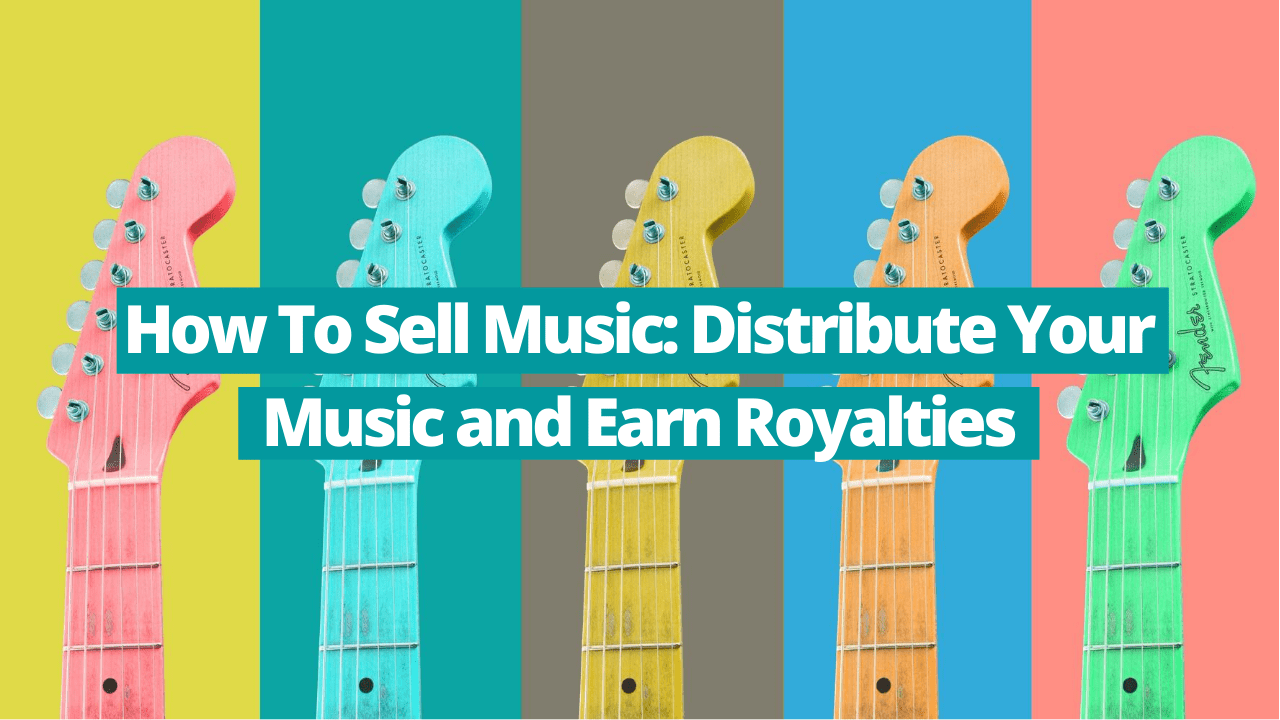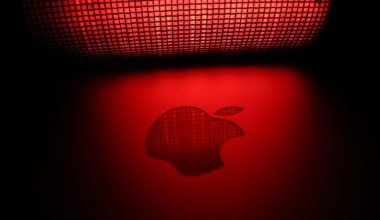In today’s digital world, musicians have more opportunities than ever before to reach a global audience and sell music through online platforms. Digital music distribution has transformed the industry, allowing artists to distribute their music worldwide with just a few clicks. However, with these opportunities come challenges, especially when it comes to maximizing your royalties. This guide will delve into how you can effectively sell music through digital music distributors and boost your earnings from your creative work.
We’ll explore the essential aspects of digital music distribution, how to choose the right distributor, and practical strategies to maximize your royalties. Whether you’re an independent artist or a label, understanding these concepts can significantly impact your revenue streams.
Understanding Digital Music Distribution
Digital music distribution is the process of delivering your music to online platforms where it can be purchased, streamed, or downloaded by listeners. These platforms include well-known services like Spotify, Apple Music, Amazon Music, and many others. The primary goal of digital distribution is to ensure your music is available on as many platforms as possible, thereby reaching the broadest audience.
Unlike traditional physical distribution, where music was sold through CDs or vinyl records, digital distribution focuses on getting your music into digital storefronts and streaming services. This method is faster, more efficient, and opens up your music to a global market.
The Importance of Digital Music Distributors
When you decide to sell music online, you need a strategy that not only gets your music to listeners but also maximizes your earnings. This is where digital music distributors come in. These services act as intermediaries between artists and streaming platforms, ensuring your music is available worldwide. They also handle complex tasks like royalty collection and data management, allowing you to focus on your art.
Digital music distributors are crucial because they:
- Expand Your Reach: Distributors can get your music on hundreds of streaming platforms and digital stores, reaching listeners worldwide.
- Manage Royalties: They collect royalties from various platforms and ensure you get paid for every stream, download, or purchase.
- Provide Marketing Tools: Many distributors offer additional services like playlist pitching, marketing support, and promotional tools that help increase your music’s visibility.
Maximizing Your Royalties: A Step-by-Step Guide
1. Choosing the Right Digital Music Distributor
One of the most critical decisions you’ll make as an artist is choosing the right digital music distributor. The distributor you choose will impact how much control you have over your music, how widely it is distributed, and ultimately, how much money you make.
When evaluating digital music distributors, consider the following factors:
- Royalty Rates: Some distributors take a larger cut of your earnings than others. Look for distributors that offer competitive rates, ensuring you keep a higher percentage of your royalties.
- Platform Reach: Ensure that the distributor has access to a wide range of platforms. The more platforms your music is on, the better your chances of earning royalties.
- Additional Services: Some distributors provide extra services like playlist pitching, marketing tools, or sync licensing opportunities. These can be valuable in boosting your earnings.
- Ease of Use: The distributor’s platform should be user-friendly, allowing you to upload your music, manage metadata, and track your earnings easily.
Selecting the right distributor is crucial for your long-term success in the music industry. It’s not just about getting your music online; it’s about maximizing its potential to earn.
2. Optimizing Your Metadata
Metadata is the information that accompanies your music files when they are uploaded to streaming platforms. This includes details like the song title, artist name, genre, and release date. Properly managed metadata ensures that your music is easily discoverable on streaming platforms. Conversely, poorly managed metadata can lead to missed royalty payments or your music not appearing in search results.
Here’s how to optimize your metadata:
- Accurate Information: Ensure all metadata is accurate and complete. This includes correct spellings, consistent artist names, and the right genre tags.
- Use Relevant Keywords: Incorporate relevant keywords in your metadata to improve searchability on platforms. This can help your music get discovered by listeners who are searching for specific genres or styles.
- Consistent Branding: Use consistent artist and song names across all platforms. This helps in building a recognizable brand and makes it easier for fans to find your music.
By optimizing your metadata, you make it easier for potential listeners to find your music, which can lead to more streams and, ultimately, more royalties.
3. Leveraging Pre-Saves and Pre-Orders
Many digital music distributors offer the ability to set up pre-saves on streaming platforms like Spotify or pre-orders on stores like iTunes. Pre-saves and pre-orders generate early interest in your release, increasing the chances of it charting or getting featured on playlists.
The benefits of pre-saves and pre-orders include:
- Increased Visibility: Pre-saves and pre-orders help create buzz around your release before it goes live. This can lead to higher streaming numbers on release day.
- Early Metrics: These tools allow you to gauge fan interest and predict how well your release will perform. This information can be useful for planning future promotions.
- Boosting Chart Position: A high number of pre-saves or pre-orders can contribute to your music’s chart position, particularly on platforms that count these actions as part of their ranking algorithms.
To make the most of pre-saves and pre-orders:
- Promote Early: Start promoting your pre-save or pre-order link weeks before the release. Use social media, email newsletters, and other marketing channels to reach your audience.
- Offer Incentives: Consider offering exclusive content, early access, or discounts to fans who pre-save or pre-order your music. This can encourage more people to take action.
- Track Performance: Monitor how many pre-saves or pre-orders you get to gauge the success of your marketing efforts. Adjust your strategy as needed to maximize results.
Leveraging pre-saves and pre-orders effectively can lead to a successful release day, with higher initial streaming numbers and better chart performance.
4. Engaging with Playlists
Playlists are one of the most powerful tools available to artists looking to sell music and increase streams. Getting your song added to popular playlists can significantly boost your streaming numbers and, consequently, your royalties.
Playlists can range from algorithmically generated lists to curated collections by influencers or the platforms themselves. Getting featured on the right playlists can expose your music to thousands or even millions of new listeners.
Here’s how to engage with playlists:
- Submit to Playlist Curators: Many platforms, like Spotify, allow artists to submit their music for playlist consideration. Take advantage of this feature to get your music in front of curators.
- Create Your Own Playlists: Build and promote your playlists that include your tracks alongside other popular songs. This can help engage your audience and introduce them to your broader catalog.
- Collaborate with Influencers: Partner with social media influencers, bloggers, or other musicians to get your music featured in their playlists. This can help tap into new audiences and increase your streams.
Getting your music on playlists is not just about luck; it’s about strategy. The more visible your music is on playlists, the higher your chances of earning substantial royalties.
5. Utilizing Social Media and Video Platforms
Social media and video platforms like YouTube are essential tools for promoting your music. Consistent content creation and interaction with fans can lead to more streams, downloads, and ultimately, more royalties.
Utilizing these platforms effectively can significantly increase your music’s exposure:
- Create Engaging Content: Regularly post content that resonates with your audience. This could include music videos, behind-the-scenes footage, or even lyric videos.
- Run Targeted Campaigns: Use social media advertising to run targeted campaigns aimed at promoting your latest releases. Platforms like Instagram and Facebook offer powerful tools for targeting specific demographics.
- Engage with Your Audience: Interaction is key to building a loyal fanbase. Respond to comments, engage in live sessions, and create polls or Q&A sessions to connect with your followers.
- Leverage YouTube: Create high-quality music videos or visualizers for YouTube. This not only enhances your music’s appeal but also creates another revenue stream through ad earnings.
By effectively utilizing social media and video platforms, you can maintain a steady stream of engagement with your audience, which in turn can lead to increased royalties from streams and sales.
6. Exploring Sync Licensing Opportunities
Sync licensing allows your music to be used in TV shows, movies, commercials, and video games. This can be a lucrative source of income, often providing higher payouts than streaming alone.
To make the most of sync licensing opportunities:
- Register with a PRO: Ensure your music is registered with a Performing Rights Organization (PRO) to be eligible for sync opportunities. This is crucial for tracking and collecting royalties when your music is used.
- Work with Sync Agents: Sync agents specialize in placing music in visual media. Consider partnering with one to increase your chances of landing a sync deal.
- Prepare Instrumentals: Many sync opportunities require instrumental versions of songs, so have those ready. Instrumentals are often easier to place in media since they don’t interfere with dialogue or voiceovers.
Sync licensing not only boosts your income but also exposes your music to broader audiences, potentially leading to more fans and streams.
7. Monitoring Your Analytics
Most digital music distributors offer detailed analytics that show how your music is performing across different platforms. Regularly reviewing these analytics helps you understand what’s working and what’s not, allowing you to make data-driven decisions.
Key analytics to monitor include:
- Earnings: Keep track of your royalty payments to ensure they align with your streams, downloads, and sales. If there’s a discrepancy, investigate and address it promptly.
- Platform Performance: Identify which platforms are generating the most streams and focus your promotional efforts there. For example, if your music performs better on Spotify than on Apple Music, it might make sense to invest more in Spotify promotions.
- Geographic Data: Understanding where your listeners are located can help you tailor your marketing strategies. For example, if you notice a growing fanbase in a particular city or country, consider organizing a live performance or targeted advertising in that area.
By analyzing these metrics regularly, you can adjust your marketing strategies, optimize your distribution efforts, and ultimately increase your royalties.
Common Pitfalls to Avoid
While there are many strategies to increase your royalties, it’s equally important to be aware of common pitfalls that can hinder your success. Avoiding these mistakes can save you time, effort, and money in the long run.
- Neglecting Smaller Platforms: While focusing on major platforms like Spotify and Apple Music is essential, don’t overlook smaller, niche platforms. These platforms may cater to specific audiences that could be more receptive to your music, leading to higher engagement and royalties.
- Inaccurate Metadata: Always ensure your metadata is accurate and up-to-date. Mistakes in metadata can lead to lost royalties or your music not being properly credited.
- Overlooking Direct Sales: Streaming is an important revenue source, but don’t forget about direct sales through platforms like Bandcamp. Direct sales allow you to keep a larger share of the revenue, which can be significant over time.
The Future of Digital Music Distribution
The landscape of digital music distribution is constantly evolving. Staying informed about emerging trends can help you stay ahead of the curve and continue to increase your royalties.
Some trends to watch include:
- Blockchain and NFTs: Blockchain technology and NFTs (Non-Fungible Tokens) are emerging as new ways to distribute and monetize music. These technologies offer artists more control over their music and the potential for higher revenue shares.
- AI-Driven Playlists: Artificial intelligence is playing an increasing role in creating personalized playlists, which can help your music reach the right audience more effectively. As AI technology advances, it could become a vital tool for artists looking to increase their royalties.
- Direct Fan Monetization: Platforms that allow artists to monetize directly from fans, such as through subscriptions or exclusive content, are becoming more popular. These platforms enable artists to build a loyal fanbase while generating consistent income.
By keeping an eye on these trends and adapting your strategies accordingly, you can continue to grow your music career and maximize your royalties in the digital age.
Conclusion
Selling music and maximizing your royalties in the digital era requires a strategic approach. By choosing the right digital music distributor, optimizing your metadata, leveraging playlists, and staying informed about industry trends, you can significantly increase your earnings. Remember, success in the music industry isn’t just about making great music; it’s about effectively getting that music to your audience. Start applying these strategies today and watch your royalties grow!
So what are you waiting for? Sign up to Deliver My Tune now.
For further reading, explore these related articles:
- Top Digital Music Distribution Sites for Independent Artists in 2024
- How to Help Your Musician Friend Without Spending Money
- How to License Your Music for Commercial Use
For additional resources on music marketing and distribution, visit Deliver My Tune.






